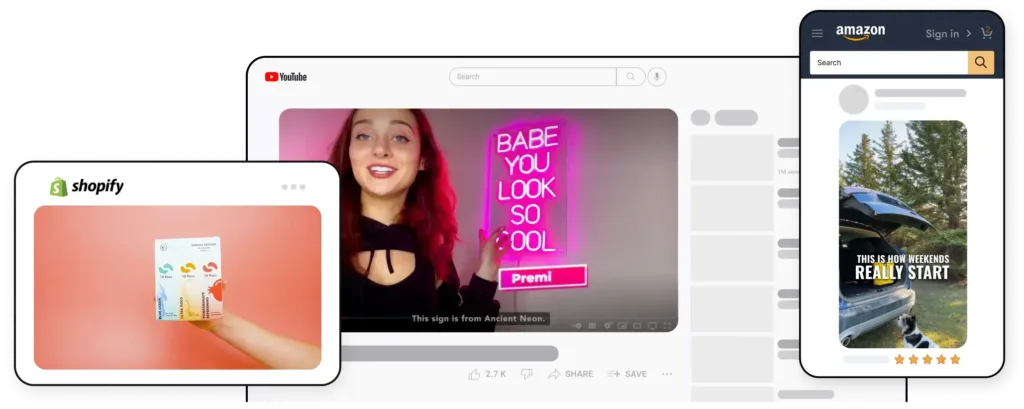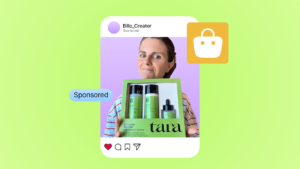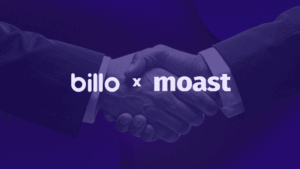The Complete Guide to Ecommerce Marketing Strategy for DTC Brands
Passionate content and search marketer aiming to bring great products front and center. When not hunched over my keyboard, you will find me in a city running a race, cycling or simply enjoying my life with a book in hand.

Rising customer acquisition costs, changing consumer behaviors, and a crowded digital landscape mean one thing: a generic marketing plan won’t cut it anymore. For ecommerce brands, success hinges on a tailored ecommerce marketing strategy that aligns business goals with tactics like SEO, email, automation, and paid social.
In 2025, it’s not just about being online, it’s about being strategic, data-driven, and omni channel. From personalization to lifecycle automation, the brands seeing real ROI are those that build their strategies from the ground up.
In this guide, you’ll learn what makes a modern ecommerce strategy work and how to build one that drives sales from day one.
TL;DR:
- Set SMART goals to guide your ecommerce efforts.
- Segment your audience using behavior and first-party data.
- Match the right channels to each stage of the buyer journey.
- Launch integrated campaigns across email, ads, and UGC.
- Optimize continuously using real-time performance data.
What is An Ecommerce Marketing Strategy?
A ecommerce marketing strategy is a comprehensive plan for how an online brand attracts, converts, and retains customers across digital channels. It spans awareness (e.g., paid social), consideration (e.g., blogs, SEO), and conversion stages (e.g., retargeting, cart recovery emails).
At its core, this strategy connects business goals to a tactical mix of platforms like Google, Meta, email, and your website. Smart brands don’t just show up on these channels, they align content and timing with customer intent.
What sets a winning approach apart? Data. The best strategies are grounded in buyer insights and behavioral segmentation, shaping everything from messaging to media spend (Squarespace). When executed right, it becomes a flywheel that builds revenue predictability across your funnel.
A clear ecommerce marketing strategy turns digital chaos into scalable, measurable growth.

Core Components of A Winning Strategy
To build a high-performing ecommerce marketing strategy, you need more than a great product. The right mix of channels, tools, and tactics working in sync is also essential.
Use Content and SEO to Drive Discovery
Content marketing remains a foundational pillar of any ecommerce marketing strategy. High-performing brands combine educational storytelling with keyword-optimized SEO to increase organic traffic and capture buyer intent. This isn’t just about blogging, it’s about mapping content to the funnel, from product explainers to comparison pages (SEOProfy).
In 2025, answer engine optimization is rising as a must-have. Platforms like Google SGE and Perplexity reward content that’s semantically rich and structurally clear (Wikipedia).
Automate Email and SMS For Lifecycle Marketing
Email is still king – 78.8% of ecommerce marketers say it’s their highest-performing channel. Add SMS and push notifications, and you’ve got a full-funnel lifecycle engine. Automation powers this: think abandoned cart flows, welcome sequences, and product reminders triggered by real behaviors. For brands looking to take efficiency further, robotic process automation tools can streamline repetitive workflows across multiple systems, freeing teams to focus on strategy.
Tools like Klaviyo, Mailchimp, and ActiveCampaign offer built-in segmentation and A/B testing, helping brands personalize without manual lift.
Invest In Paid Media and Social Commerce
Paid ads, especially on Google and Meta, still dominate ecommerce spend. But performance depends on how well ads match platform norms and user expectations. In 2025, UGC-style creative paired with first-party data is proving to drive stronger engagement and ROAS.
Social commerce is also on the rise: 76% of UK shoppers plan to buy through social, yet only 46% of brands offer native checkout. Early adopters gain a clear edge.

Prioritize Omnichannel Integration
Leading ecommerce brands operate across five or more channels. Integrating email, apps, websites, and social platforms creates seamless journeys that boost retention and LTV. Tools like customer data platforms (CDPs) help orchestrate messaging across touchpoints (MoEngage, 2024).
This level of integration also improves timing, making sure customers see the right message, at the right time, on the right platform.
Optimize For Conversion
Instead of chasing more traffic, conversion rate optimization (CRO) focuses on doing more with what you already have. Personalized landing pages, real-time analytics, and A/B tests help lift conversion rates without increasing ad spend.
Step-By-Step Execution Framework
Building a strong ecommerce marketing strategy isn’t just about knowing what to do, it’s about doing it in the right order. This five-step playbook helps you move from planning to performance with clarity.
Step 1: Define Business and Marketing Goals
Every effective ecommerce marketing strategy starts with clear, measurable goals. That means ditching vague aims like “grow sales” in favor of SMART goals – Specific, Measurable, Achievable, Relevant, and Time-bound.
Why it matters? Ecommerce marketers who use SMART goals are 376% more likely to report success.
Examples of good SMART goals:
- Grow email revenue by 25% by Q4
- Lower cart abandonment by 10% in 90 days
- Increase average order value (AOV) by $5 over the next 6 months
Start here, and everything else (from channel selection to content) will align more effectively.
Step 2: Understand Your Audience
A winning ecommerce marketing strategy is customer-led, not channel-led. That means building detailed buyer personas using first-party data, customer surveys, reviews, and creative analytics, not just assumptions.
Look at:
- Demographics (age, location, income)
- Psychographics (motives, objections, values)
- Behavior (repeat vs. one-time buyers, browsing patterns)
Segmentation is key. Group users by intent and lifecycle stage to tailor campaigns for each segment. For example, your messaging to loyal customers should differ from what you show to new visitors (Glowtify; First Pier). The better you know your audience, the less you waste on campaigns that miss the mark.
Step 3: Choose The Right Channels
Your ecommerce marketing strategy should prioritize channels based on buyer behavior. Each channel plays a distinct role across the customer journey.
Smart combinations include:
- SEO + blog content → great for long-term visibility and educating new visitors
- Email + SMS → best for retention, promotions, and re-engagement
- Paid ads (Google, Meta) → ideal for targeting high-intent prospects quickly
- UGC + influencer content → powerful for building trust and social proof
The goal isn’t to be everywhere, it’s to show up where it matters most, with content that matches how people shop on each platform. Choosing the right channels makes your budget go further and your message hit harder.
Step 4: Launch Integrated Campaigns
Once your strategy and channels are in place, it’s time to go live with coordination. High-performing ecommerce brands align creative, messaging, and timing across every platform.
Plan campaigns around the customer journey:
- Top of Funnel (TOFU): use video ads, UGC, and influencer posts to drive awareness.
- Middle of Funnel (MOFU): offer comparison guides, case studies, and abandoned cart emails.
- Bottom of Funnel (BOFU): lean on urgency-driven offers and retargeting to close sales.
Consistency is key. A landing page should mirror the tone and visuals of your ads and emails. This unified experience reduces friction and builds trust. Integrated campaigns convert better because they remove confusion and reinforce your message at every touchpoint.
Step 5: Measure, Analyze, Optimize
You can’t improve what you don’t measure. The final step in a high-performing ecommerce marketing strategy is continuous performance tracking and optimization.
Focus on core KPIs like:
- ROAS (Return on Ad Spend)
- CAC (Customer Acquisition Cost)
- AOV (Average Order Value)
- LTV (Lifetime Value)
- Email click-through and conversion rates
Use tools like GA4, Klaviyo, or Shopify dashboards to monitor results in real time. Then, run micro-tests: tweak headlines, creatives, offers, and audience segments. Shift more budget to top-performing channels and cut what underperforms (MarketingStrategy.com).
Bonus Tactics for DTC Growth
If you’ve nailed the basics, it’s time to layer in advanced tactics that can supercharge your ecommerce marketing strategy, especially for DTC brands looking to scale.
Leverage Influencers and UGC
Influencer marketing isn’t just a trend, it’s a high-ROI engine. In 2025, the industry is projected to hit $22.2–$32.6 billion, with ecommerce brands seeing returns of $4.12–$5.78 for every $1 spent.
Key insights:
- 86% of brands plan to use influencers in 2025.
- Nano- and micro-influencers outperform mega-influencers in engagement (10.3% vs. 7.1%).
This shift toward smaller, authentic creators supports UGC at scale, without inflating costs.
Expand Omnichannel Reach
Top-performing DTC brands don’t just sell on one platform, they integrate web, mobile, retail, and marketplaces into a cohesive brand experience.
Retail models like Target’s “Buy Online, Pick Up In Store” (BOPIS) boost conversion. Meanwhile, brands like Adore Beauty are extending retail media into stores to drive a 30% revenue lift.
Sharpen Your CRO Tactics
Want higher ROI without driving more traffic? CRO is your lever. Use A/B testing, real-time personalization, and behavioral data to improve conversion flows.
Tools like visual search and predictive recommendations are driving higher product discovery and faster checkouts (Searchspring).
These bonus tactics help growth-stage brands break past plateaus by improving efficiency, engagement, and revenue per visit.
Final Thoughts: Turn Your Strategy Into Scalable Growth
In 2025, the brands winning in ecommerce aren’t just throwing money at ads or chasing every new trend, they’re executing a clear, data-backed ecommerce marketing strategy that connects goals, channels, and content across the entire funnel.
From audience insights to channel selection, integrated campaigns to continuous optimization, every piece of your strategy should serve a single purpose: driving growth that lasts.
Ready to put your plan into action? Start by tightening your strategy and then bring it to life with scroll-stopping content that converts. Explore how high-performing UGC can help you launch faster, test smarter, and scale what works:
👉 Check out ecommerce content marketing examples
👉 See how ecommerce photography drives conversion
FAQs
What makes ecommerce strategy different from general marketing?
Ecommerce strategy focuses on direct conversions, short sales cycles, and clear attribution, unlike general marketing, which may prioritize brand awareness or offline metrics.
Do all brands need the same strategy?
No. A DTC skincare brand might prioritize social and UGC, while a B2B ecommerce store could lean heavily on email nurture and SEO.
Which channel delivers the highest ROI in ecommerce?
Email consistently leads the pack, followed by paid search and SMS.
Is social commerce essential for 2025?
Yes. Consumer adoption is outpacing brand readiness, early adopters have a clear opportunity to lead.
What are the most important ecommerce KPIs to track?
ROAS, conversion rate, AOV, LTV, and CAC are essential for tracking performance and profitability.
SEO Lead
Passionate content and search marketer aiming to bring great products front and center. When not hunched over my keyboard, you will find me in a city running a race, cycling or simply enjoying my life with a book in hand.

Authentic creator videos, powered by real performance data
22,000+ brands use Billo to turn UGC into high-ROAS video ads.
Social Commerce Trends To Watch In 2026
Social shopping is no longer a side experiment. As 2025 [...]...
Read full articleAd Hooks That Scale: Turning 1 Winning Angle Int...
Performance teams often think they need endless novelty, but newer [...]...
Read full article3 Ways Shopify Brands Use Billo + Moast Together...
User-generated content (UGC) is no longer just a nice-to-have, it’s [...]...
Read full article



